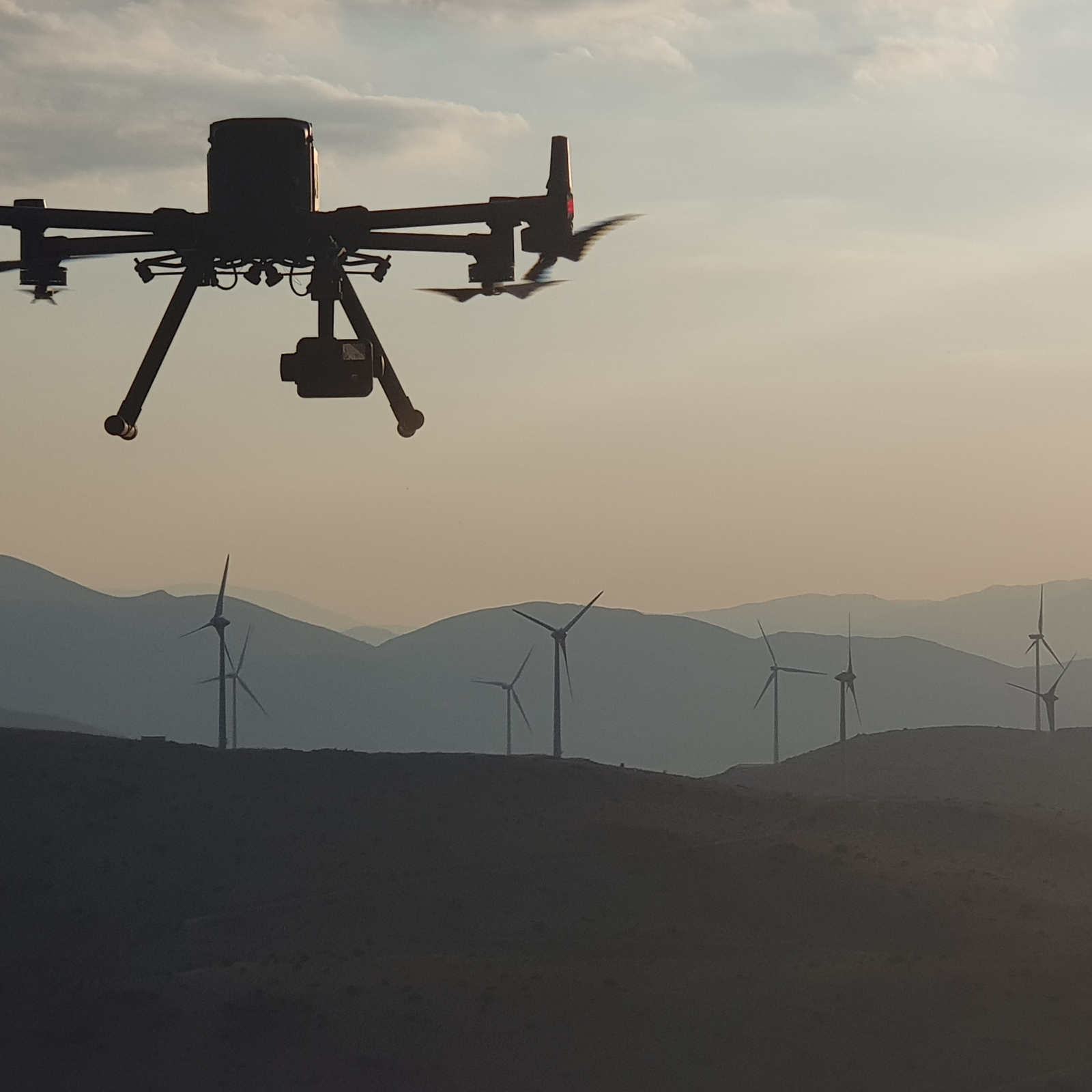
Case Studies
Drones for wind turbine inspection
Drones are a safe, efficient, accurate, and cost-effective tool for wind turbine inspections. Find out how drones compare to traditional methods, how they benefit data capture, and which drones are best for inspecting windfarms. ... Read More

A detailed guide highlighting the benefits of using drones to inspect wind turbines, which are playing an important role in helping to meet efficiency targets;
Using drones to inspect windfarms provides safe, efficient, cost-effective and accurate data collection;
Traditional methods - such as rope-access - can take three-to-six hours to inspect a turbine, while a drone can do it in less than an hour;
A drone can be used to inspect more than five turbines a day, while alternative methods can result in just one or two being inspected over the same period;
How drone workflow techniques help to inspect different parts of a wind turbine;
DJI provides a range of solutions for wind turbine inspection. Find out which drones are best for this application.
With their ability to provide a clean, renewable, cost-competitive, and reliable source of energy, it's no surprise that wind turbines will play an important role in helping to meet efficiency targets.
According to the International Energy Agency (IEA), this rapidly-growing form of renewable energy production could provide 18% of the world's electricity by 2025.
This anticipated additional reliance on windfarms means it's imperative that turbines are kept in peak condition, ensuring they are running efficiently and have a prolonged lifespan to maximise output and ROI.
Therefore, regular inspection is crucial. And drones provide a fast, accurate, safe, and efficient method of capturing this data, especially compared to alternative methods, such as rope-access or ground-based inspection.
After all, why do this...
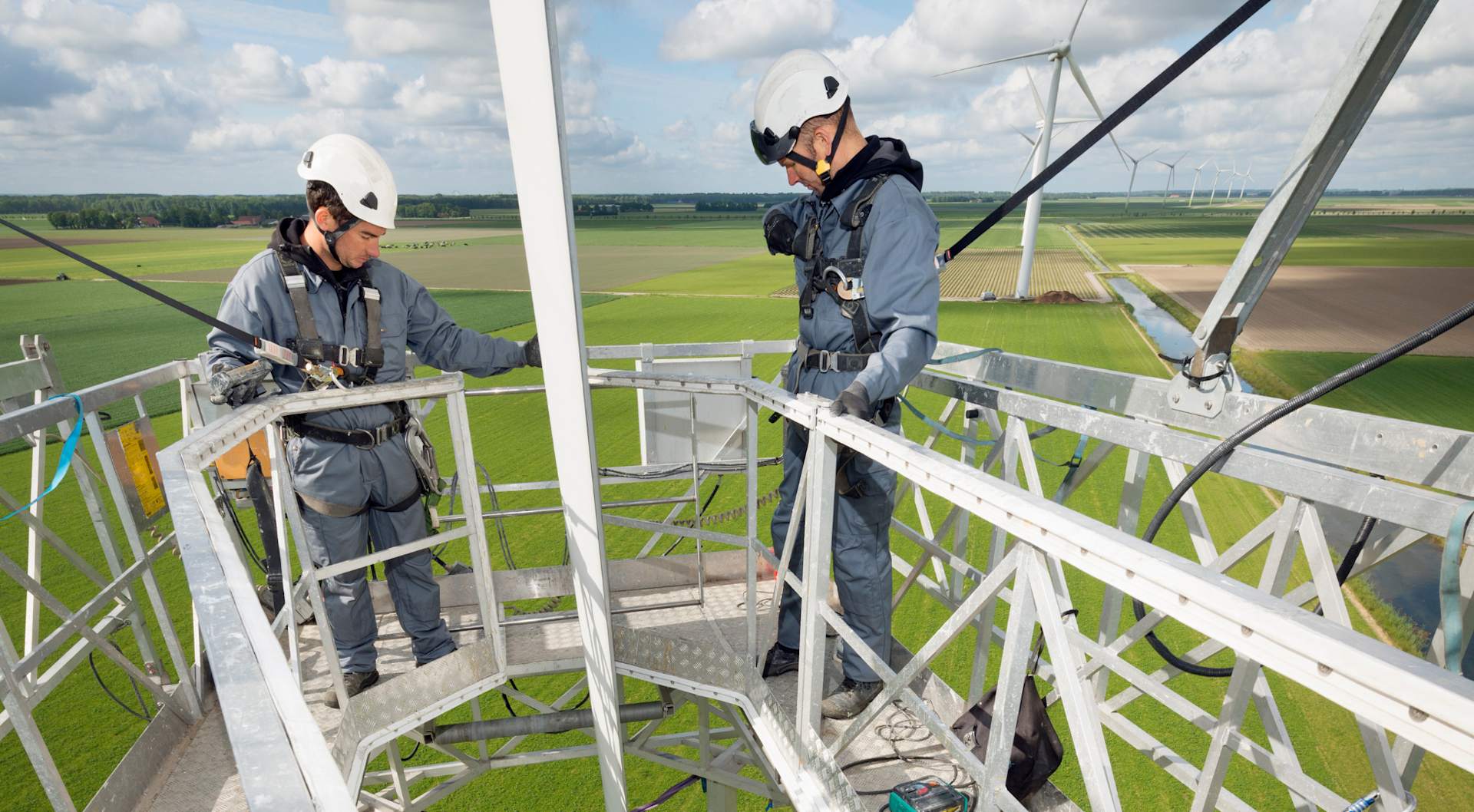
...which can be time-consuming, labour-intensive, expensive, and requires staff to work at height...when you could deploy a drone...

...to reduce inspection times by 70%, while collecting accurate data and keeping staff away from danger.
This blog explores the advantages of using drones for windfarm inspection and highlights some of the best platforms
How Important Is A Wind Turbine Inspection?
Hail, snow, lightning, rain, salt, and dust are just some of the things that wind-turbine components must endure.
Therefore, wind turbine inspections are crucial for maintaining the safety, efficiency, and longevity of wind turbines, and for maximising the return on investment for windfarm operators.
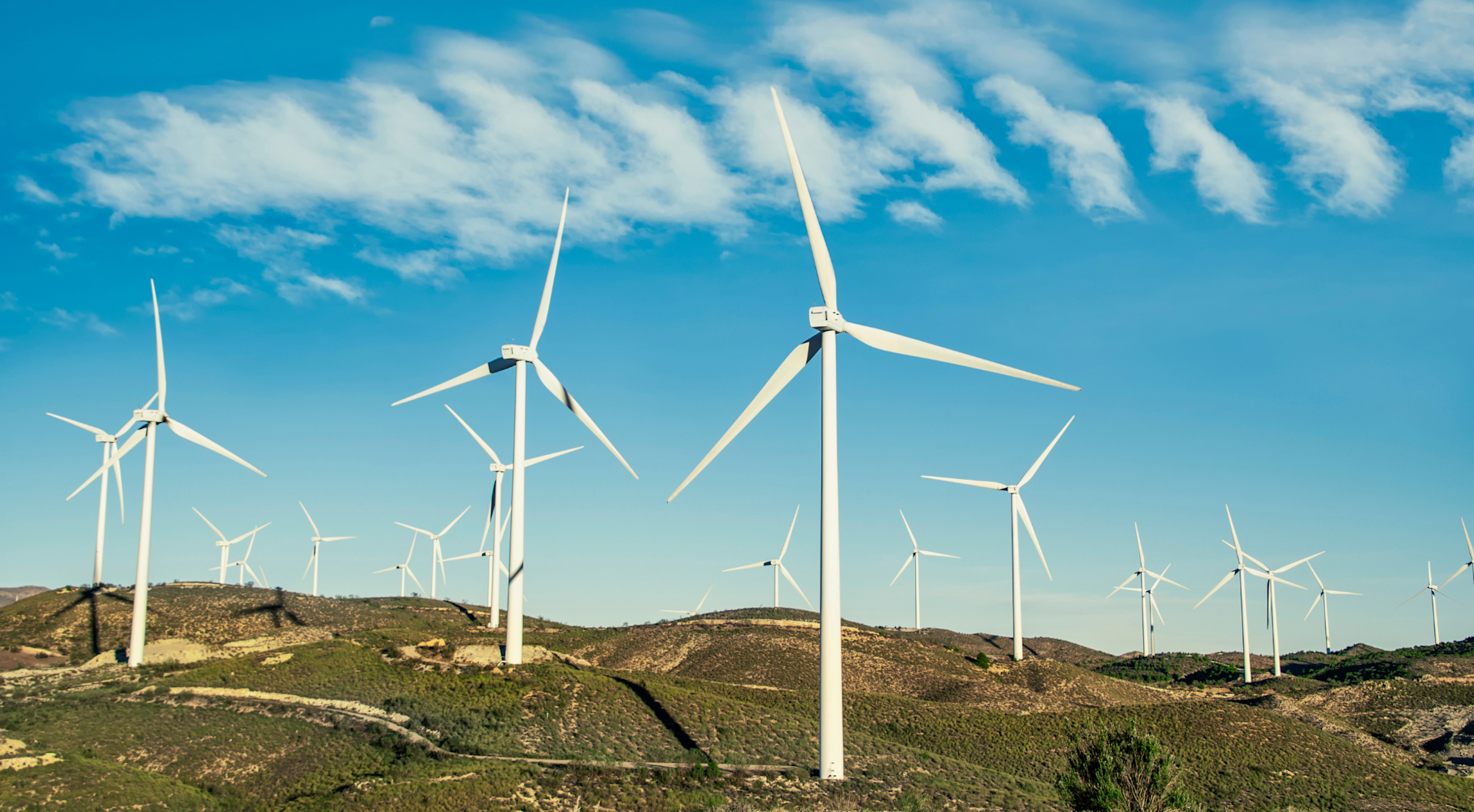
Regular inspections help to ensure that wind turbines are functioning properly and that any potential issues are identified and addressed before they become major problems. This can help to reduce downtime, increase energy production, and prolong the lifespan of the turbine.
Additionally, regular inspections can help to identify and prevent safety hazards, such as blade cracks and other structural issues that could lead to equipment failure. This is important to protect workers and the public from potential injury or damage.
Furthermore, inspections can provide data and information that can be used for predictive maintenance, allowing windfarm operators to schedule maintenance and repairs based on the actual condition of the turbine, rather than on a set schedule. This can help to reduce costs and increase efficiency.
Common windfarm defects include:
Tower: Crack, damage, peeling paint, corrosion.
Blade: Crack, damage, paint peeling off, deformation, lightning traces, water ingress.
Nacelle: Lightning traces, crack, damage, corrosion, oil splits, paint peeling off.
Hub: Skewness, loose connection, damage.
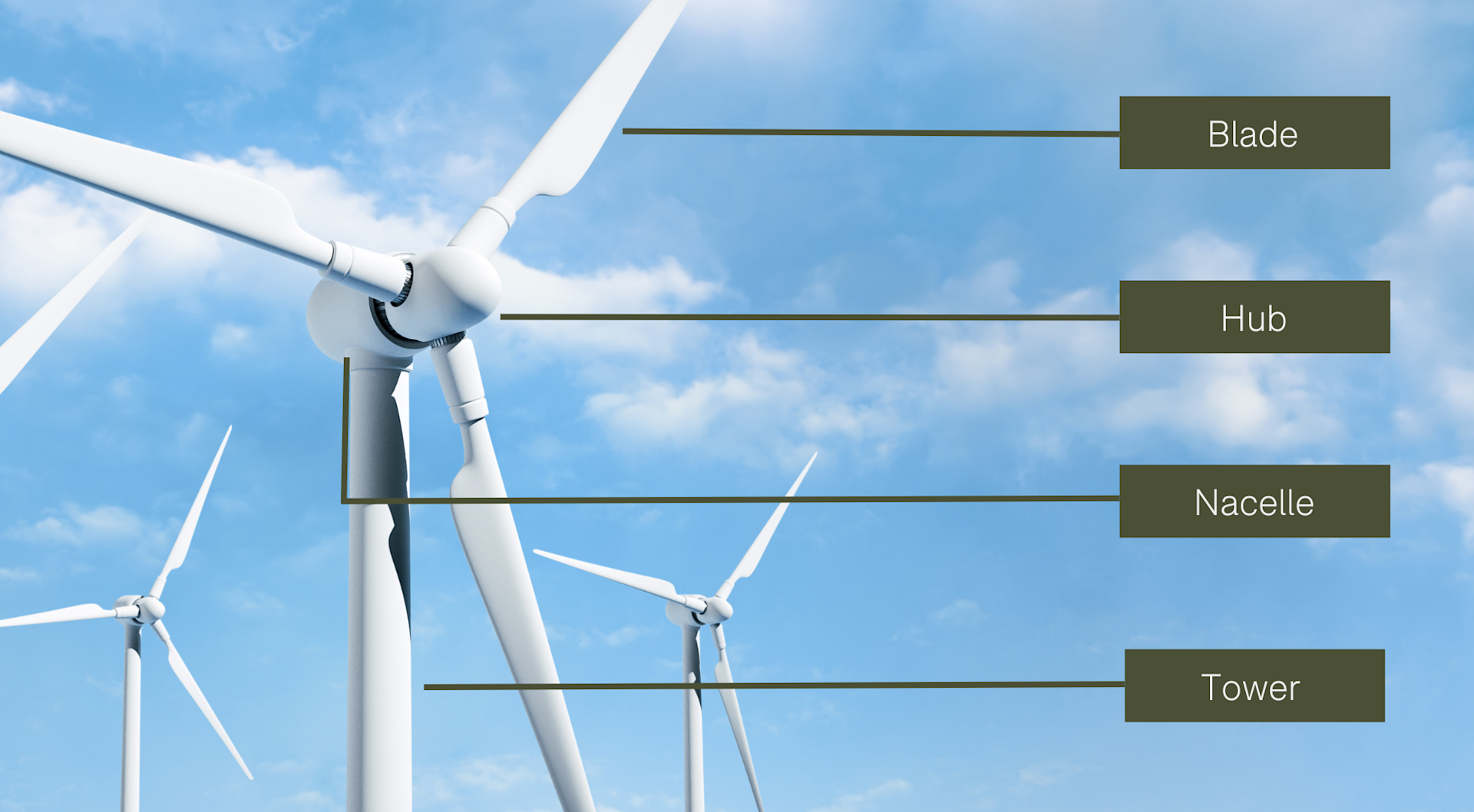
Windfarm Inspection: Traditional Methods Vs Drone Inspection
There are three main methods for wind-turbine inspection. These are:
Rope access/platform
Ground inspection
Drone inspection
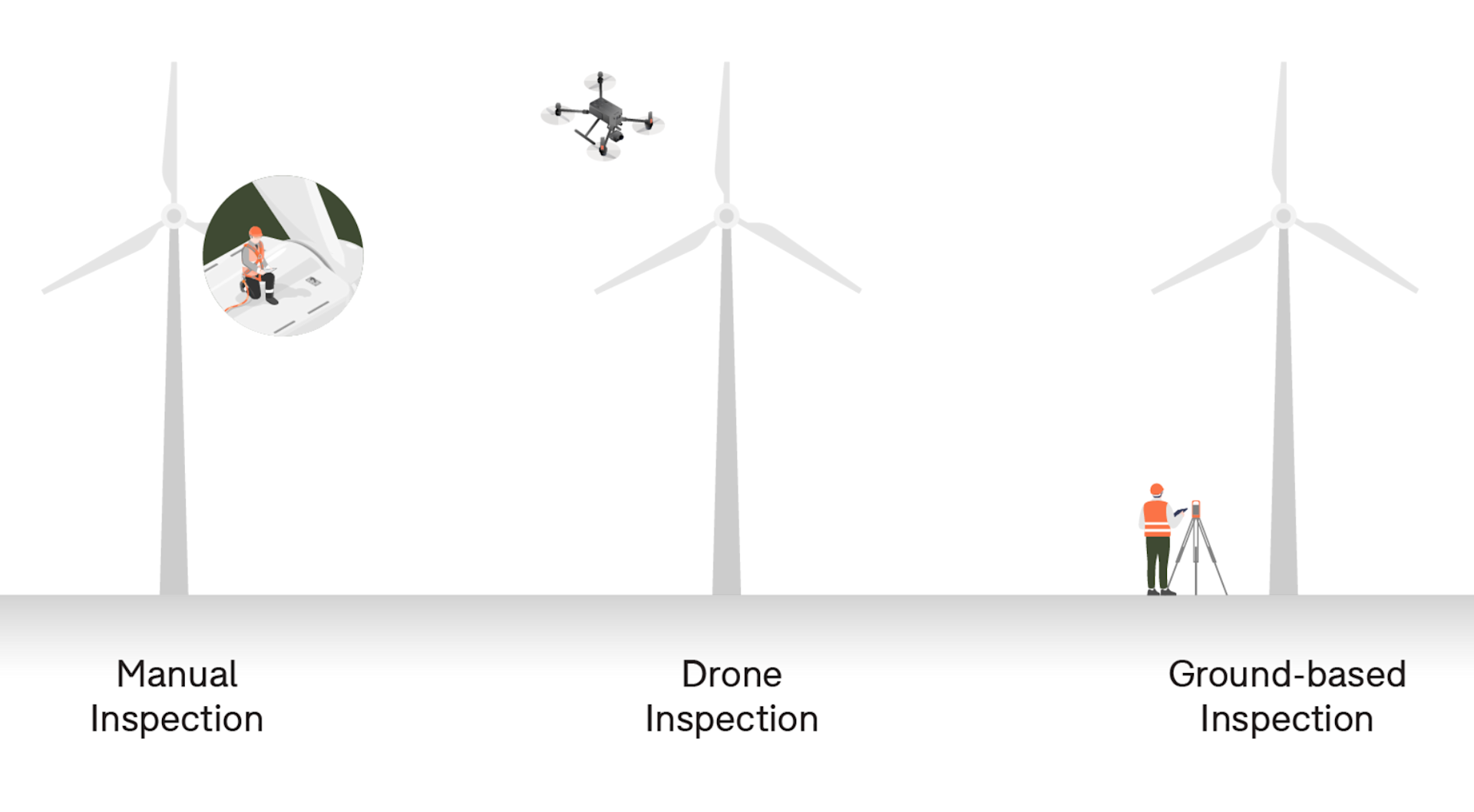
The table below provides an overview of the advantages of drone inspection, compared to the other inspection methods.
Rope/platform Access | Ground-based Inspection | Drone Inspection | |
Safety | Hazardous | Safe | Safe |
Data Quality | High quality | Low quality | High quality |
Time | 3-6 hours | 3-6 hours | 15 mins-1 hour |
Efficiency | 1-2 turbines a day | 3-4 turbines a day | 5+ turbines a day |
Labour | Minimum 3 people | One-person job | One-person job |
Cost | High | Fairly low | Low |
And now we'll dig deeper into each of these areas for a more detailed look at how drones can benefit wind turbine inspections compared to traditional, alternative methods.
Safety
Drones offer a safe inspection method as technicians are not required to work at height.
Utilising a range of specialist cameras, vital insights can be captured with feet firmly on the ground.
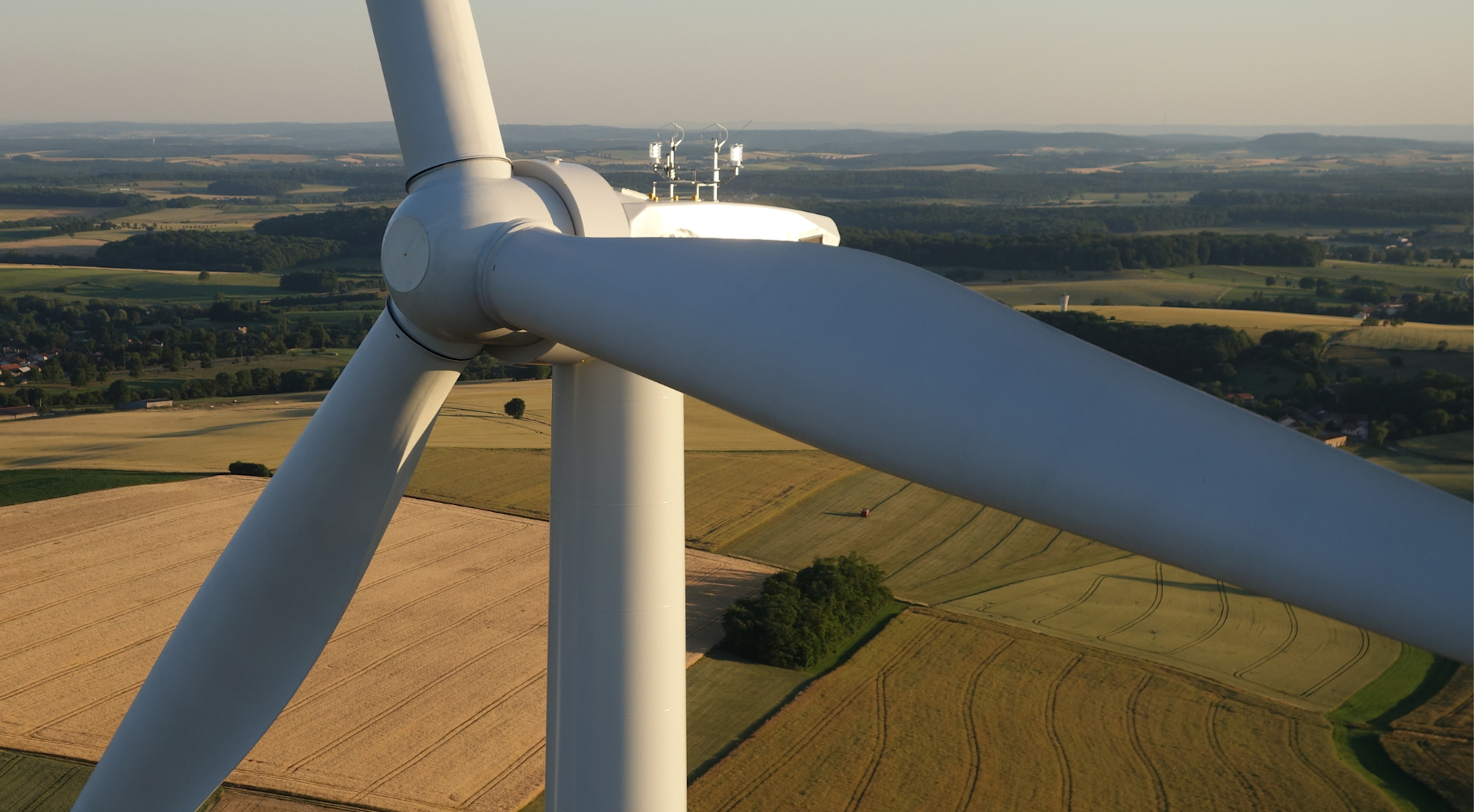
Depending on the operational envelope of the drone, some platforms provide the possibility to perform an inspection in higher winds compared to other methods.
Like drones, ground-based inspection offers a safe route, as the photographer stays on the ground - but as we'll see later in this blog, this method can offer limited data capture.
In contrast, using rope access/aerial platforms require technicians to work at height, increasing the risk factor and also potential insurance costs.
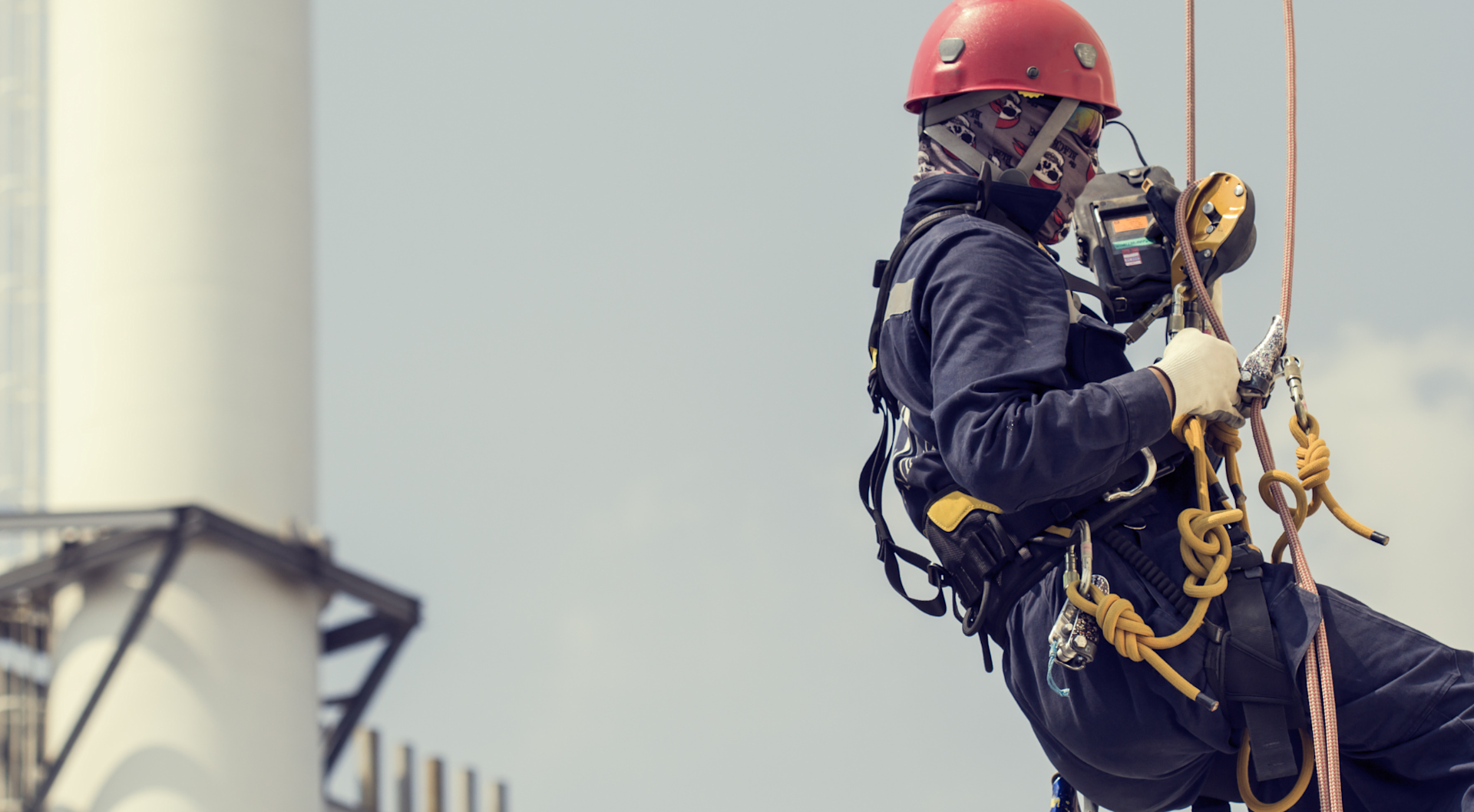
Data Quality
Drones enable quality data collection.
UAS equipped with high-resolution cameras and other sensors can provide detailed inspections, giving engineers a better understanding of the condition of the turbine. Aerial inspection techniques are also able to capture imagery from all four sides of the turbine.
The ability to utilise visual and thermal sensors means that drones enable a versatile method of data collection for deeper and more diverse insights.
For instance, this close-up view of a wind turbine was obtained using a drone and a zoom camera - all while the operators were working at ground level. Notice how the camera can pick up minute details such as the serial number - ideal for spotting tiny defects on a wind turbine from afar.
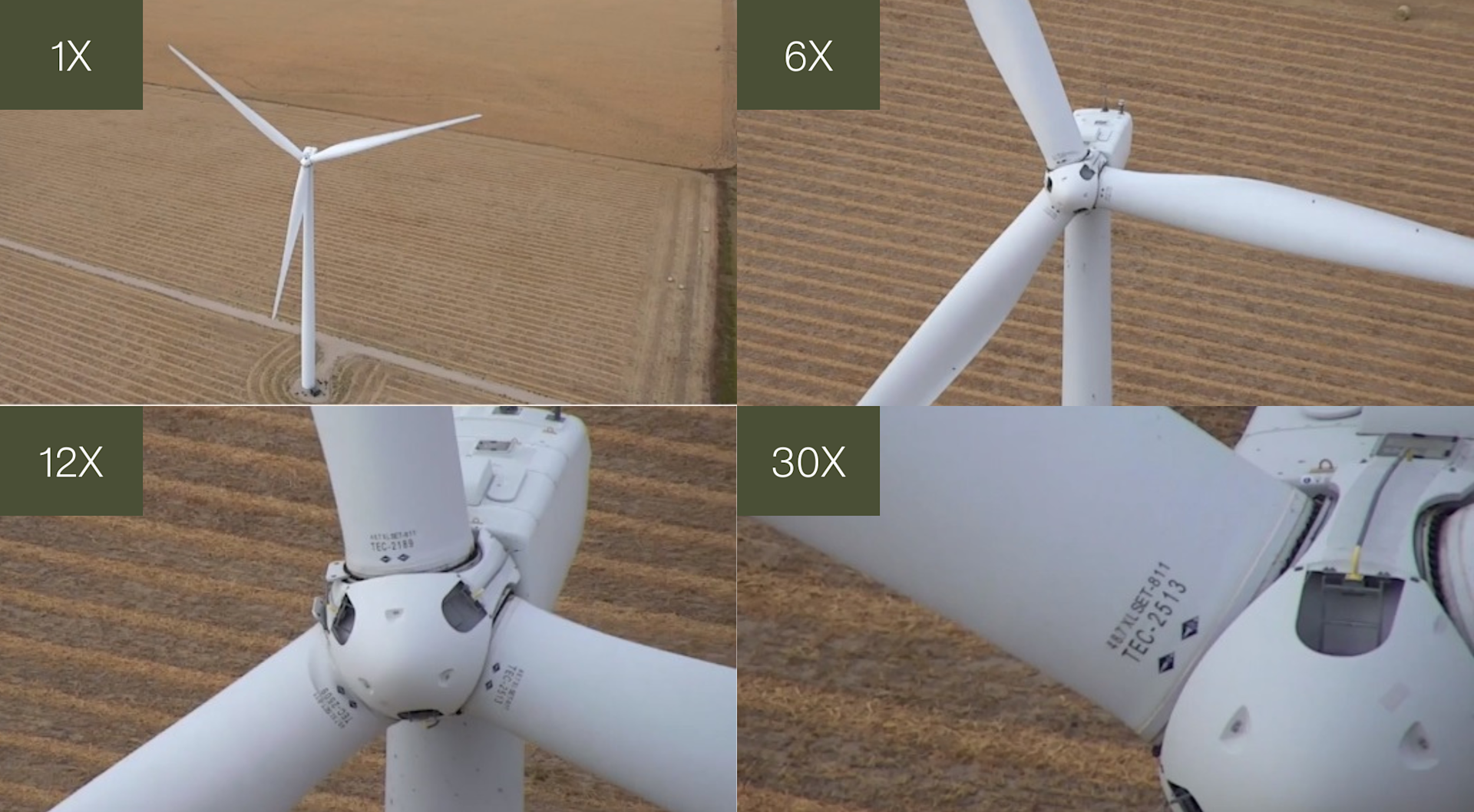
Utilising preset flight paths, drones enable repeatable, automated, and consistent data collection, and maps and models can be created to measure the size of damages.
It's true that rope access/aerial platforms offer a good level of data capture, as staff can get up-close to various parts of the turbine and obtain a deep examination beyond the surface. And there's the added advantage that some maintenance can be conducted at the time of the inspection.
However, this method does present itself with potential accessibility problems, and human error is evitable, meaning data capture can sometimes be unreliable or incomplete.
The data quality of ground-inspection can be very poor, especially to the shadowy areas and the fast-moving parts of the blades (towards the tip).
Time And Efficiency
Drones provide an extremely fast method of data collection, ranging from 15 minutes to an hour.
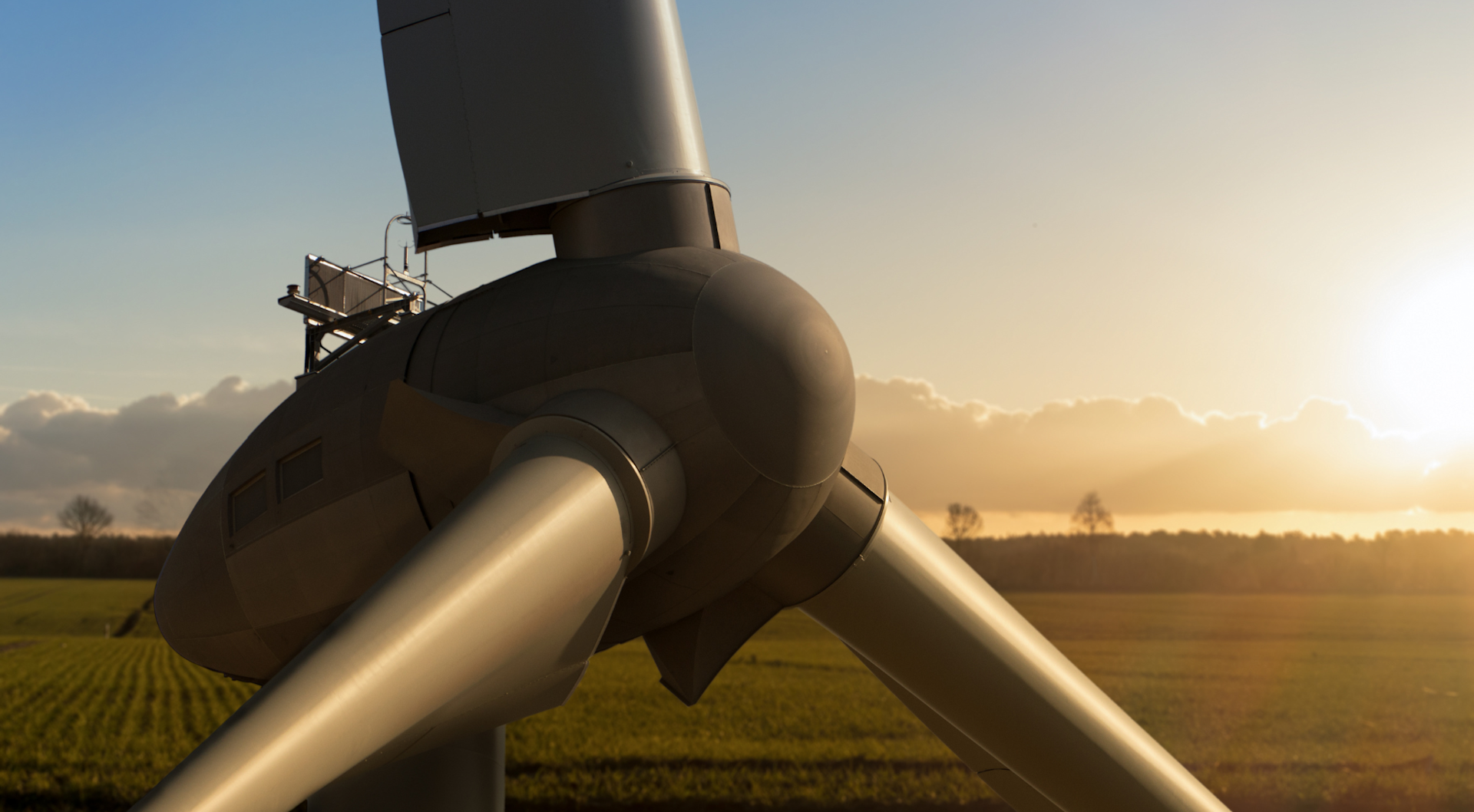
This is not the case with the rope access or ground inspection.
Rope access is slow because numerous hours are required to install the rope and then conduct a manual inspection of the blades.
Ground inspection is also slow-going, as capturing quality images from all sides of the turbine takes a lot of time.
As a result of the time factor, a drone inspection is an extremally efficient inspection method, meaning that more turbines can be inspected in one day.
Cost
The cost of a wind turbine is calculated by both the total man-hours spent on site and by the loss of income due to having the turbine off-service.
With rope access the turbine must be stopped for several hours leading to a severe loss of income and the cost of having specialised technicians on ropes.
There's also the issue of the length of each survey, while this method needs more staff resulting in increased labour costs.
In contrast, drones represent great value for money and can have a positive impact on ROI. The speed reduces downtime, while labour costs are kept to a minimum. Drones can be used to inspect wind turbines remotely, reducing the need for travel and accommodation costs for workers.
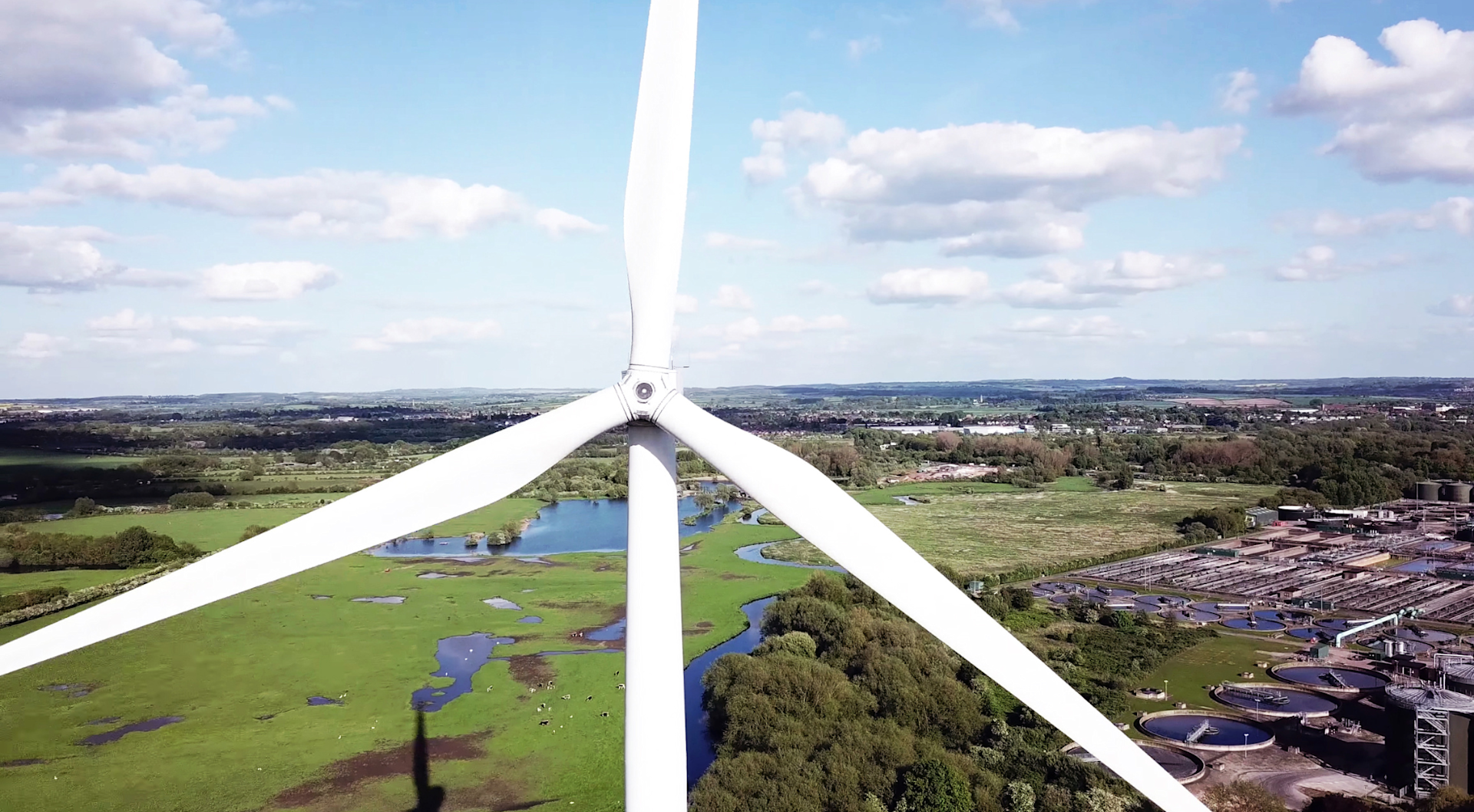
And as drones can provide detailed data on the condition of wind turbine components - which can be used to predict when maintenance or replacement is needed - this reduces long-term downtime due to maintenance and increases the overall efficiency of the windfarm.
Ground inspection, meanwhile, has fairly low costs - however, the limitations compared to a drone survey make it an inferior solution.
Summary: Traditional Methods Vs Drones For Wind Farm Inspection
Efficient, accurate, repeatable, and safe - drones have significant advantages compared to more traditional methods of windfarm inspection.
The table below provides a summary of the advantages and disadvantages of each method - based on the information above - and highlights why drones provide an optimised inspection method.
Rope Access/Aerial Platform Inspection | Ground-based Inspection | Drone Inspection | |
Advantages | • Close look of the damage and deeper examination beyond the surface. • Better possibility to assess the damage severity and extent. • Possibility to perform minor repair while inspecting. | • Safe inspection as the photographer stays on the ground. • The wind turbine does not need to be stopped (in low wind conditions). • Only one person may be required to complete the inspection. | • Safe inspection as staff stay on the ground. • Fast inspection which can range from 15 minutes to 1 hour. • Quality data which can be used to make a detailed inspection and measure the size and location of the damages. • Possibility to perform an inspection in higher winds compared to other methods – in respect to the wind resistance of the drone. • Possibility to collect data both with visual and thermal sensors. • Repeatable, automated, and consistent data collection. |
Disadvantages | • More than three people are needed on site (higher labor cost). • Time-consuming; technician can normally inspect 1 - 2 turbines per day and consequently there is a loss of profit while the wind turbine remains off service. • Technicians work at height, so there is a higher risk factor and insurance cost. | • The data quality is poor, especially to the shadowy areas and the fast-moving parts of the blades (towards the tip). • Given that the setup of the camera should be in different positions in order to capture the four sides of each blade this method is time-consuming. • The possibility to measure and exactly locate the damages is impossible due to the different angle of capturing images. | • The data collected are restricted on the surface of the blade and often the extent and the cause of a damage cannot be determined. |
Thermal Drones For Wind Turbine Inspection
Thermal drones can help wind turbine inspections by providing a detailed view of the condition of the turbine and identifying potential issues that may not be visible with visual inspection methods.
They can collect data such as:
Temperature Measurement: Thermal drones use thermal imaging cameras to measure the temperature of different parts of the wind turbine. This can help to identify potential problems such as overheating bearings, electrical issues or worn-out parts.
Blade Inspections: Thermal drones can be used to detect a variety of anomalies, including splits, defects due to lightning, damaged tips as well as fiber issues. Thermal cameras will also pick up missing adhesive joints, blade pitch errors and many more. Detecting these anomalies at an early stage, when they are small, will lower the cost and prevent severe damage.
Electrical Inspections: Thermal drones can be used to inspect the electrical components of wind turbines, such as the generator, inverter and transformer for any hotspots.
Drones For Offshore Windfarms
This article has focused mainly on on-shore windfarms, but drones can also be used for offshore windfarms.
The benefits listed above apply to windmills located out at sea, but UAS also provide specific benefits for this application.
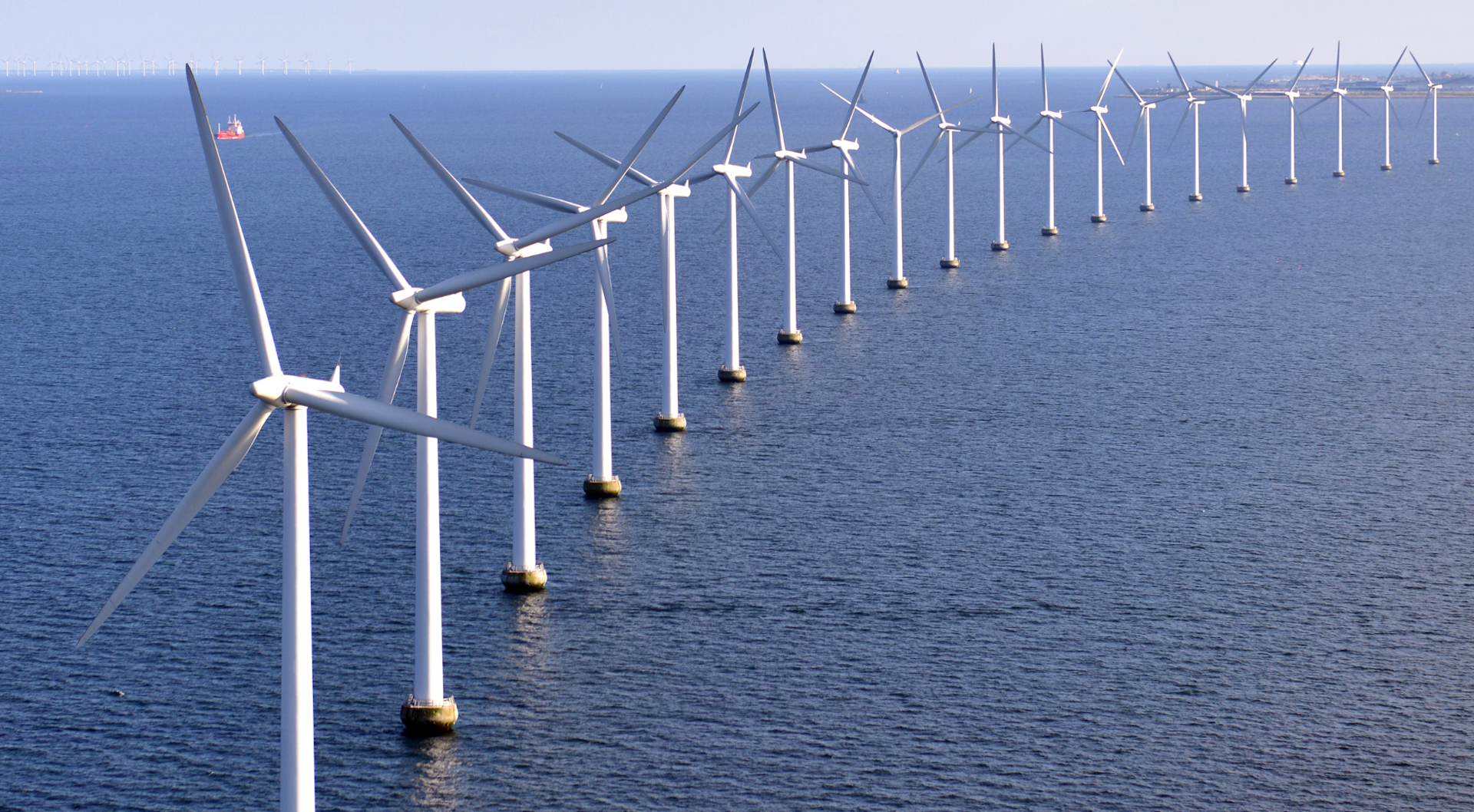
This includes:
Accessibility: Offshore wind turbines can be difficult to access, especially in inclement weather conditions, but drones can easily fly to the turbine and inspect it safely.
Safety: Drones can be used to inspect offshore wind turbines without putting human workers in harm's way. This is particularly important for offshore wind turbines, which are located in harsh and often-dangerous environments.
Cost-effectiveness: Using drones for offshore wind turbine inspections can be more cost-effective than using traditional methods, such as sending workers out on boats or ships.
Overall, using drones for offshore windfarm inspections can provide a safe, cost-effective, efficient, and detailed way to monitor turbines and predict when maintenance or replacement is needed.
Drones For Windfarm Inspections: Best Workflows
When it comes to inspecting wind turbines by drone, there are several workflows to enable the most comprehensive data collection possible.
The below information sets out optimal inspection methods for each part of the turbine.
Wind Turbine Tower Inspection
The tower is divided into three main components:
Foundation
Flanges (the connection between the power parts)
Upper connection with the nacelle.
The main issues identified are corrosion, fungus, and oil leak. At the foundation we may also see cracks on the surface around the tower.
To capture data from this part of the turbine, the drone flies around the tower capturing data from four sides which have 90 degrees difference in orientation.

Wind Turbine Nacelle And Hub Inspection
The nacelle has multiple areas for inspection. The main parts to be inspected are the following:
Bolts
Surface for cracks
Oil leakage
Meteo Mast and equipment
Missing or worn parts and covers
The nacelle should be inspected from all sides, as the graphic below shows.
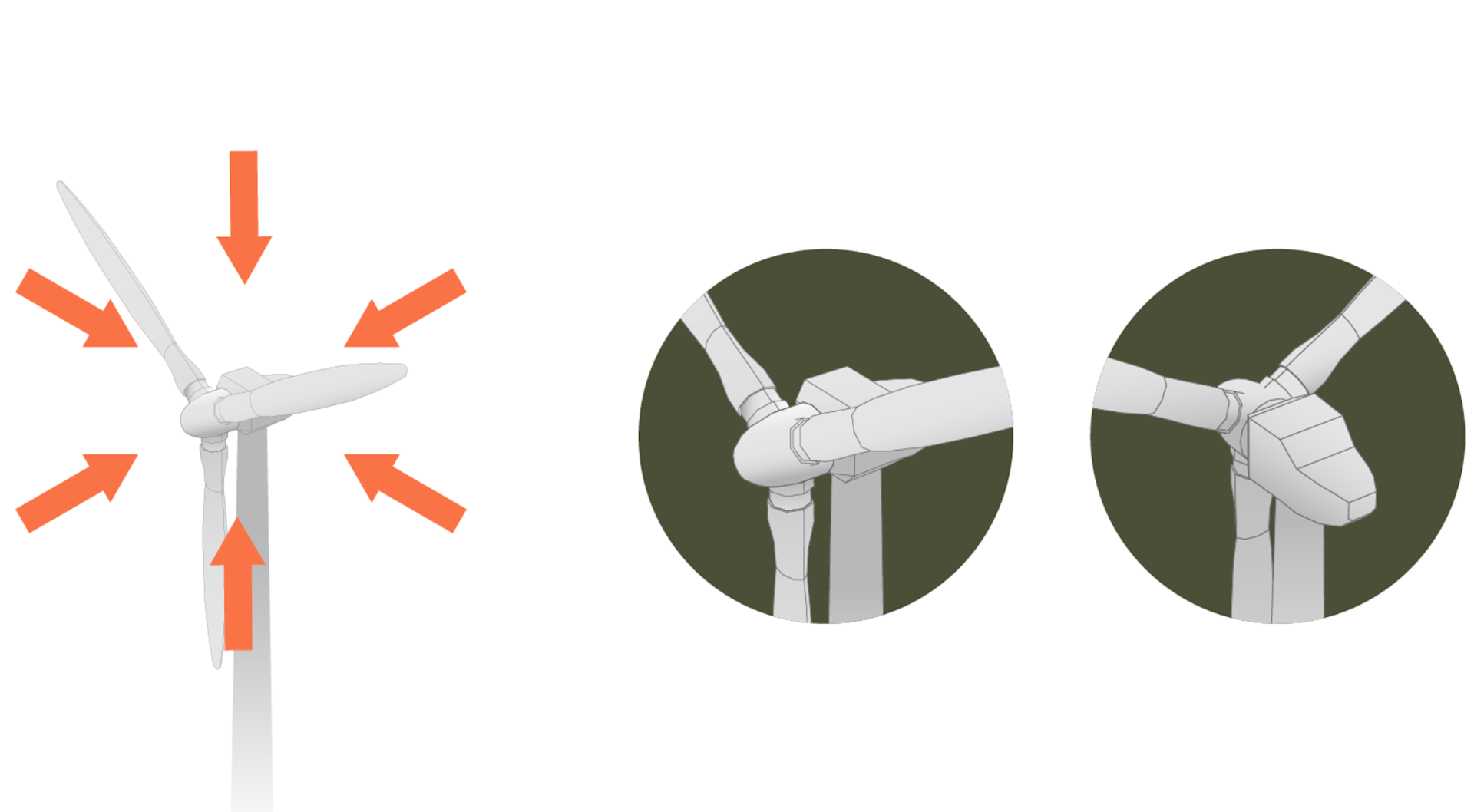
Wind Turbine Blade Inspection
Blade inspections can be undertaken in three ways: 12 O'clock, 6 O'clock, or fix position.
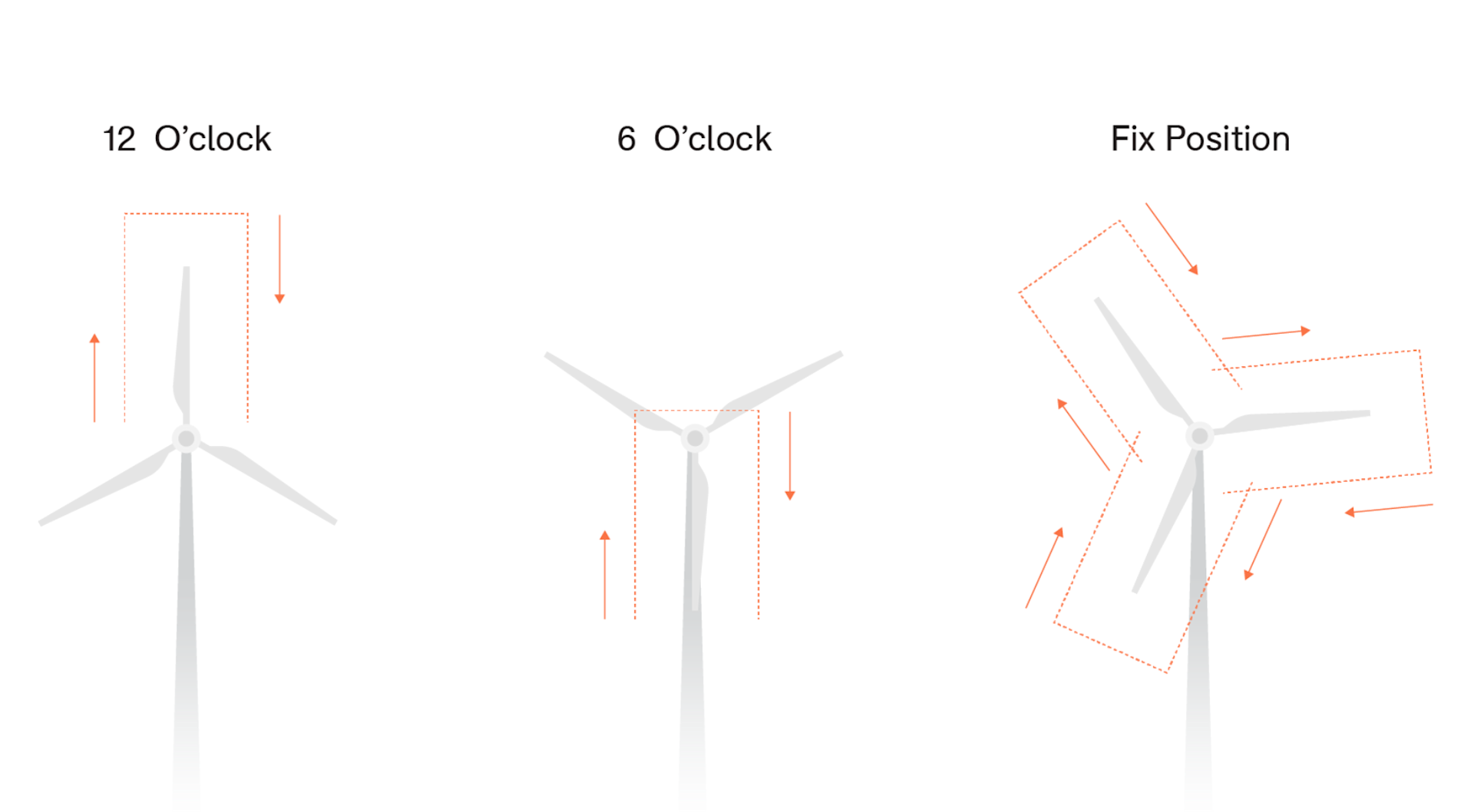
Each method has advantages and disadvantages, as listed below.
12 O'Clock | 6 O'Clock | Fix Position | |
Description | Each blade is manually positioned facing upwards. The drone flies manually or automated along its four sides, covering fully the blade surface and keeping the camera in 0° pitch facing vertically to the surface. | Each blade is manually positioned facing downwards. The drone flies manually or automated along its three sides, keeping the camera in 0° pitch facing vertically to the surface. | The wind turbine is manually stopped once at a specific or random position. The drone uses an automated mission flight plan and flies around the four sides of the blade capturing data along the surface. |
Advantages | • Mostly clear background • Possibility to easily capture clear images of the trailing edge • No need to make complicated manoeuvres to fly along the blade • No obstructions around the blade • The flight can be both performed manually and with an automated mission | • Ease of access • Operate at the minimum possible altitude • Faster (compared to 12 o’clock) • Power efficient • Keeping better visual contact with the drone • No need to make complicated manoeuvres to fly along the blade • The flight can be performed both manually and with an automated mission | • Extremely time efficient • Power efficient (one set of batteries is enough) • No need to rotate the blades during the inspection • Ideal for no-wind conditions |
Disadvantages | • Time-consuming as every blade must be moved and stopped in this position • The drone must reach the maximum height of the wind turbine, so it is not power effective • Hindered visual contact with the drone due to the high altitude. | • Time-consuming as every blade must be moved and stopped in this position • There is an obstruction as the tower is right behind the trailing edge • The trailing edge can only be inspected partially from a diagonal angle | • A specific automated flight plan is needed • This type of inspection is very difficult for manual operation • The gimbal pitch should always be adjusted directly vertical to the blade • Several sides of the blades should be inspected using an upward gimbal (ex. the side facing to the earth at the 3 o’clock blade) • The mission must be carefully planned to avoid obstructions |
Best Drones For Windfarm Inspection
Drones are a great tool for windfarm inspection, and some of the leading solutions come from DJI. These include:
DJI M350RTK
The DJI M350 RTK offers wide-ranging versatility.
Beneficial for wind turbine inspections, it has interchangeable payload capabilities, integrating with a wide range of payloads - including visual/zoom and thermal cameras, spotlights, and mapping cameras like the P1 for photogrammetry, and L2 for LiDAR and photogrammetry - and can carry multiple accessories at once.

The M350 RTK is an upgraded version of the DJI M300 RTK. Read an in-depth comparison, here.
Its strong operational envelope - such as IP55 weather rating, 12m/s wind-speed resistance, and -20°C to 50°C operating temperature - enables the drone to inspect wind turbines in a range of conditions.
When used with the H20 Series, the drone can perform smart and automated inspection features.
Its six directional sensing and positioning increases flight safety when flying around or close to wind turbines, while its long flight time means more data can be collected in one mission, and the hot-swappable battery feature reduces drone downtime.
DJI M30 Series
The M30 Series is similar to the M300 RTK in performance (although it has a fixed payload), but is a smaller, more portable option.
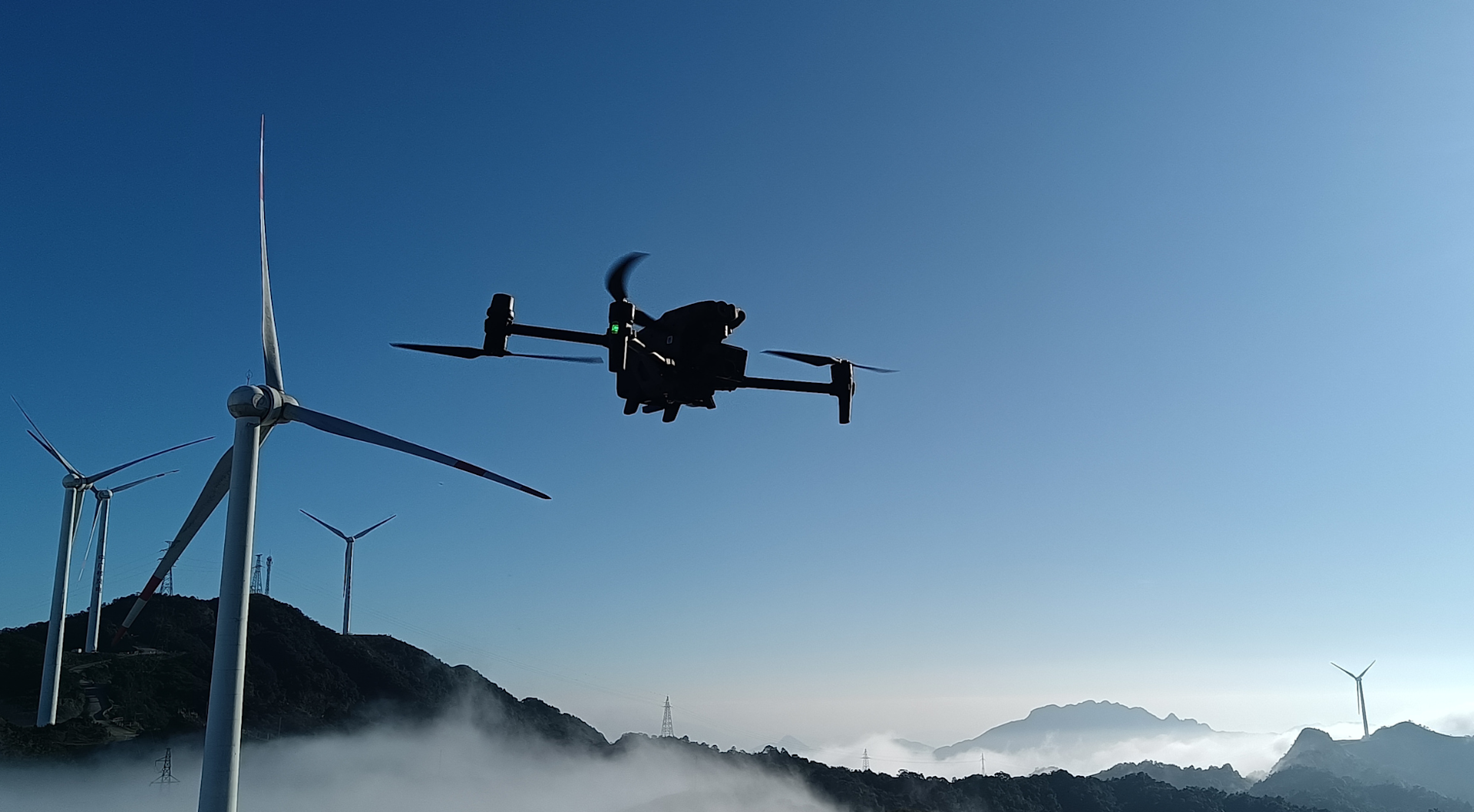
Its maximum flight time of 41 minutes increases efficiency, while its IP55-rating, -20°C to 50°C operational envelope and 12m/s wind-speed resistance enables it to collect windfarm inspection data in a variety of conditions.
Smart Inspection features, such as target point marking, make wind turbine inspections more efficient, while a swathe of safety features enhance safety on each mission.
Unlike the M300 Series, the M30 Series has a fixed camera system - so lacks the versatility of the M350 and M300 - but it has quality sensors for windfarm inspection, such as a 12MP wide camera, and 48MP zoom camera. The M30T also comes with a thermal sensor (640 x 512 resolution) for thermal windfarm inspections.
The drone can be integrated with the LP12 searchlight and speaker, helping to illuminate areas of a wind turbine in low-light conditions.
DJI Mavic 3 Enterprise Series
The Mavic 3 Enterprise Series offers a highly-portable and versatile solution for wind turbine inspection: The Mavic 3E provides survey-grade quality data, while the Mavic 3T (pictured below) enables thermal data collection.

Both drones are foldable and, tipping the scales at just over 900g, they are significantly lighter and more compact than the M300 RTK and M30 Series.
The Mavic 3E is a good choice for wind turbine inspections, thanks to its survey-grade wide sensor (4/3 CMOS, 20MP, Mechanical Shutter, rapid 0.7-second interval shooting) and 12MP Tele camera with zoom capabilities - ideal for identifying windfarm defects from afar.
Meanwhile, the Mavic 3T can be deployed for visual and thermal windfarm inspections, thanks to its 640 x 512 thermal sensor, 48MP wide camera, and 12MP zoom camera.
The drones - which have mission planning capabilities - can be integrated with an RTK Module for enhanced precision, can achieve a maximum flight time of 45 minutes, and benefit from omnidirectional sensing. However, unlike the M300 Series and M30, they do not have an IP rating.
DJI Mini 4 Pro
The DJI Mini 4 Pro is a popular choice for inspecting wind turbines, and is a particularly useful entry-level drone for people who are starting out or testing the use case.
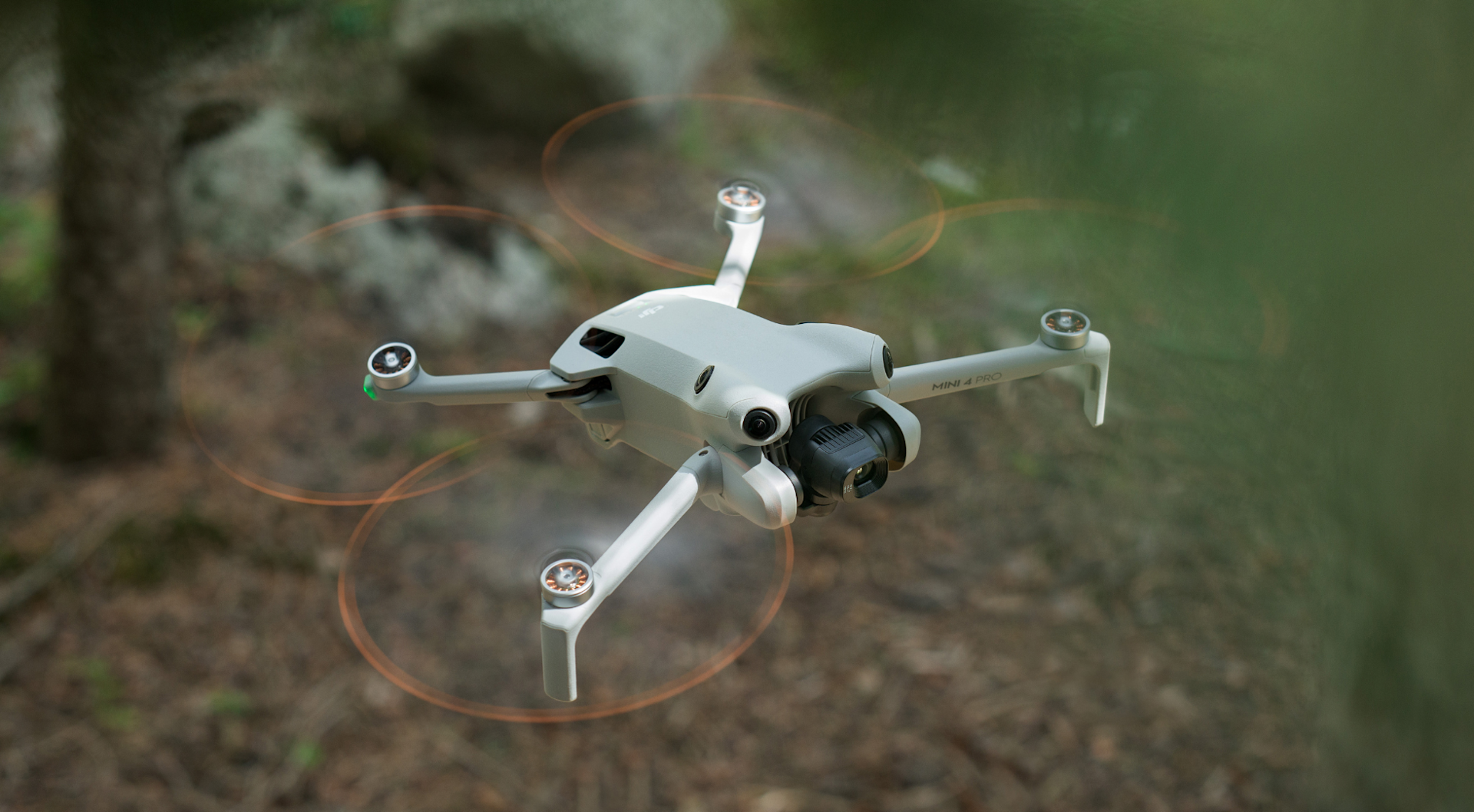
While it lacks some of the more advanced features of DJI's more powerful enterprise platforms, the Mini 4 Pro has a lot going for it.
Its sub 250g weight makes it extremely portable. It also places it in the safest weight category and means that operators do not require drone training (A2 CofC or GVC - although we do recommend this to enhance pilot expertise) and means that pilots can operate in the Open Category's A1 subcategory (flights over uninvolved people, but not over crowds).
The drone can shoot 4K video, achieve 12MP/48MP photos on a 1/1.3 inch CMOS sensor, and has a flight time of 34 minutes. It is also significantly more cost-effective compared to the other drones mentioned in this article. It doesn't have an IP rating, though.
DJI Dock
The DJI Dock is a drone-in-a-box solution.
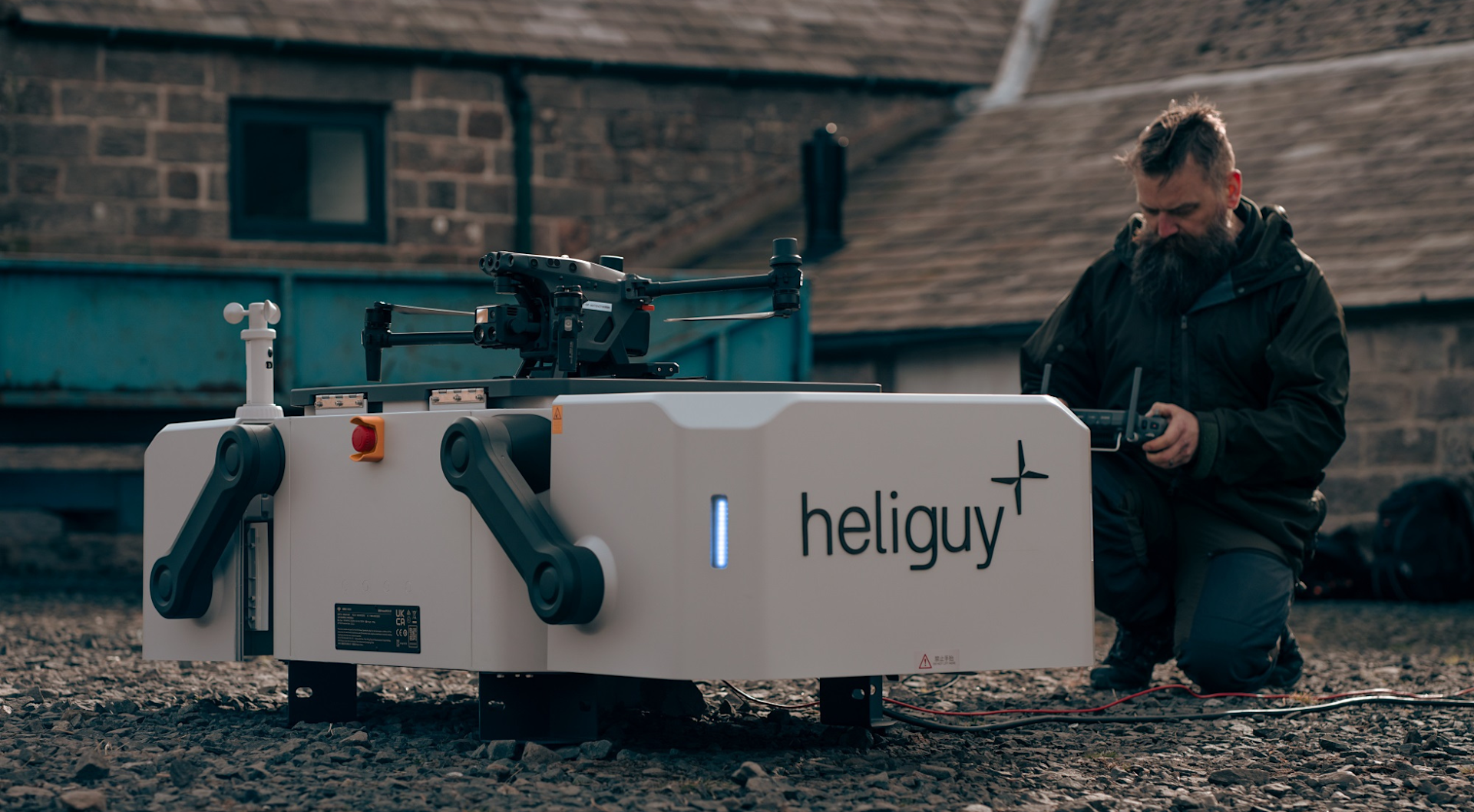
It is compatible with the DJI M30 Series Dock version - which have the same specs as the M30 Series listed above.
In the UK, the Dock can be deployed in a VLOS capacity, but as BVLOS rules advance, it will facilitate remote and automated wind turbine inspections.
Summary: Drones For Wind Turbine Inspection
The use of drones for wind turbine inspection can provide detailed and accurate data, improve efficiency and safety, reduce cost, and increase the overall performance of the windfarm.
As such, UAS has become a key tool for inspecting wind turbines and offers significant benefits compared to more traditional methods which can be less efficient, less safe, less detailed and less regular than inspections performed by drones.
To find out more about using drones for wind turbine inspections and to start or scale your drone programme, contact heliguy™, which provides drone consultancy, supply, support, training and repairs.
